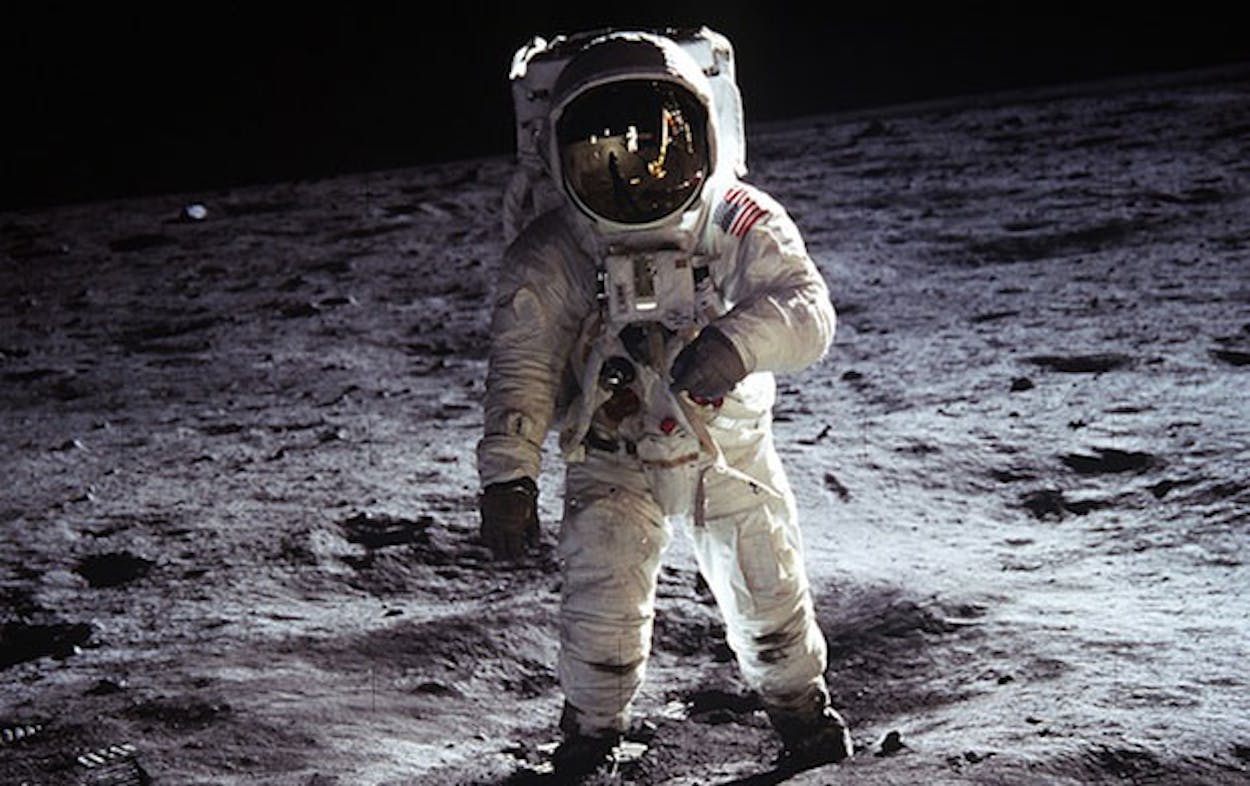On Thursday, a full 50 years, 2 months, 24 days after John F. Kennedy gave his famous speech, a Colorado-based company announced plans to send a private spacecraft to the moon by 2020. Golden Spike claims to be “the first company planning to offer routine exploration expeditions to the surface of the Moon,” and counts on its board many former NASA officials and representatives of other private space companies.
The announcement came on the eve of the 40th anniversary of the launch of Apollo 17, the final manned moon mission.
So, what’s the plan?
The Washington Post‘s Joel Achenbach gave this summary: The gist of the company’s strategy is that it’ll repurpose existing space hardware for commercial lunar missions and take advantage of NASA-sanctioned commercial rockets that, in a few years, are supposed to put astronauts in low Earth orbit.”
“The trick is 40 years old. We know how to do this,” Alan Stern, the company’s co-founder, told Achenbach in a phone interview Thursday. The difference is now we have rockets and space capsules in the inventory. . . . They’re already developed. . . . We don’t have to invent them from a clean sheet of paper. We don’t have to start over.”
How much will it cost?
A two-person trip to the moon is estimated to run $1.5 billion. That price, according to Achenbach, includes “moonwalking and, perhaps best of all, a return to Earth.” According to Wired‘s Adam Mann, “Golden Spike estimates starting their entire operation will cost between $7 billion and $8 billion, ‘soup to nuts,’ said Stern. ‘That includes developing, flight testing, and any rainy day funds.’ He compared the figure to the cost of a major metropolitan airport, though airports are typically funded by governments.”
The company hopes to keep costs low by “partnering with other aerospace companies and using existing rockets or rockets already in development, needing to only build a lunar lander and a specialized spacesuit for astronauts on the moon,” Mann wrote.
Where will these billions come from? Alex Knapp of Forbes wrote that “Stern stated that the company isn’t expecting to raise the investment all at once. ‘When Boeing builds a new airliner, they start by doing the design with their own resources. Then they start going out and getting advance sales. Once they have enough advance sales, then they go to the bank and borrow the balance. That’s the model that we’ll be using.’ Once the technology and flights have been established, Golden Spike plans to market its services primarily to governments as well as corporations and the ultra-wealthy.”
Stern thinks $750 million per seat is reasonable because, as Knapp writes, “there are robotic missions that cost that much.”
Many of the customers might be countries who hope to join the “lunar club” by sending two citizens to the moon. “Golden Spike will follow a model like that of the Russian spaceflight industry in the 1980s and ‘90s, when they charged money to take other nations’ astronauts to the Salyut and Mir space stations for scientific experiments,” Mann wrote.
Who’s involved with this ambitious project?
Two former NASA bigwigs, Gerry Griffin and Alan Stern, co-founded the company. The board of advisers includes former Speaker of the House Newt Gingrich, who famously brought up the need for a moon base during the Republican presidential primaries, and Nancy Conrad, the widow of the third man on the moon, Pete Conrad. Venture capitalist Esther Dyson is a board member.
Wait, what about NASA?
Well, right now NASA does not have a program in place to go back to the moon. “The private venture fills a void, as it were, in the wake of President Obama’s decision to cancel NASA’s Constellation program, which was initiated during the George W. Bush years as the next step in space exploration after the retirement of the space shuttle. Constellation aimed to put astronauts back on the moon by 2020 for what would become extended stays at a lunar base,” Achenbach wrote.
And NASA doesn’t really have its act together right now in general. On Wednesday, the National Research Council released a “scathing review” of NASA’s current approach to manned spaceflight, a report created at Congressional request, Achenbach noted.
NASA’s initial reaction to the project was positive, however: “This type of private sector effort is further evidence of the timeliness and wisdom of the Obama Administration’s overall space policy—to create an environment where commercial space companies can build upon NASA’s past successes, allowing the agency to focus on the new challenges of sending humans to an asteroid and eventually Mars,” NASA spokesman David Weaver said in a statement.
Before we get too excited, is Golden Spike’s plan feasible?
Maybe. But Wired‘s Mann offered some real talk:
[T]he reality is that rocket science is hard and there are many reasons not to break out the champagne and declare that humans are going back to the moon. The company may not be starting from scratch with rocket design but they also don’t have any magic way to break the laws of physics and economics.
“I would say that Stern doesn’t have enough zeros in his budget,” said space policy expert John Pike, who directs GlobalSecurity.org and worked for 20 years with the Federation of American Scientists.
The 1960s Apollo program, including development and testing, came to around $110 billion dollars in today’s money or roughly $18 billion per landing on the moon. Trouble is, rocket technology matured quickly in the ’50s and ’60s and “has seen essentially no improvement since the days of Kennedy,” said Pike. It seems a bit unbelievable that a private company can recreate Apollo at an order of magnitude lower cost.







